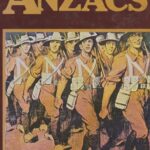The fog rolled down the river and engulf our house. The cold and damp penetrated the walls and windows. Our only view, an opaque whiteness. Through the stillness, the sound of a lone bugler playing the Last Post reached us from the nearby cemetery. Another old soldier had died. This was the house our family was living in when Patsy Adam-Smith published The Anzacs, her iconic … [Read more...] about Review: The Anzacs by Patsy Adam-Smith
WWI
It’s About Time
In my last post I wrote about Sue Castrique’s conception of history as drama and how it helped me with how I tackle the writing of my book. I am writing about how Australian soldiers reconciled their experience of World War I with their beliefs, whether they be agnostic, adherents to one of the large Christian denominations or held more unorthodox beliefs for the time. Over the … [Read more...] about It’s About Time
Searching Catalogues Effectively: National Archives of Australia
While in Hobart I have been spending a lot of time in the ‘History Room’ at the State Library. This is where researchers can retrieve items from the state and national archives that are held in Hobart. In my book I want to include stories of soldiers from each state in Australia and also look at their pre-war experiences, hence my Tasmanian research. As usual I am encountering … [Read more...] about Searching Catalogues Effectively: National Archives of Australia
War, Emotions and Beliefs
Over the last few months I have been dealing with life, the universe and the mundane. I had so much on my plate that I regretfully decided to reduce the pressure by taking a pause on my blog. But I am back! Over the next few weeks I will share some of what I have been doing. Today I thought I would give you an update on my book project. When I was in Melbourne for the birth of … [Read more...] about War, Emotions and Beliefs
Pause, Reflect and Share… and a note to publishers
Tomorrow I am driving to Canberra and will be in Melbourne at the end of the week. I am looking forward to researching at the State Library of Victoria and the Public Records Office of Victoria as well as catching up with family and friends. I have identified some key soldiers for my book and will be doing further research into the lives of a couple of the Victorian … [Read more...] about Pause, Reflect and Share… and a note to publishers
